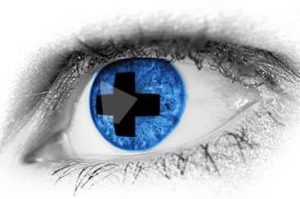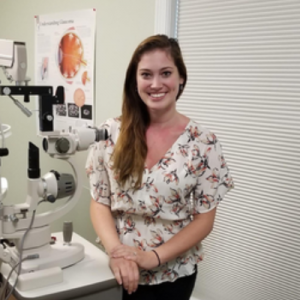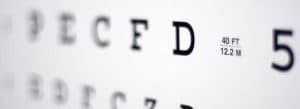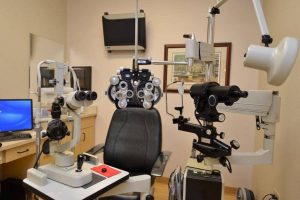What is a visual field test?
Your visual field is simply all the areas you can see at one time. This area includes all the visual space above, beneath, and on either side of an object in your central view. A visual field test enables your eye doctor to measure the range of your peripheral vision, detect any abnormalities in your visual field, such as blind spots (scotoma), or vision loss that may have occurred over time.
Why is the visual field test important?
The visual field test is important in the diagnosis of retinal conditions, and identification of retinal nerve damage. Any nerve damage is usually permanent, so early detection is crucial.
If retinal nerve damage (a scotoma) is detected, its size and shape will facilitate staging of an ocular disease. Additionally, if you have been diagnosed with glaucoma, a drooping eyelid (ptosis), this test will enable your eye doctor to determine how much vision loss has occurred or is obstructed as a result of the condition.
Visual field tests
Confrontation visual field test. Most eye doctors will use this method to detect any anomalies in your visual field, and determine if further testing is necessary.
During this test, you will cover one eye while holding a fixed gaze on an object directly in front of you. Your doctor will then hold an object in your peripheral vision field and ask you to identify what you see.
Automated perimetry test. This test creates a detailed map of your visual field, and is used for a more specific diagnosis of an ocular condition, or to monitor the progress of an ocular disease.
During this test, you will sit in front of a bowl-shaped device, called a perimeter. Each eye will be tested separately. The eye being tested will look through a lens containing your optical prescription to ensure that you can see well.
Your doctor will instruct you to keep your eye on the center target throughout the test. Lights will begin to flash in different areas of the bowl, some dimmer than others. As you see the lights, you will press a button with your thumb. Any lights that you did not see will be tallied at the end of the test, and provided in a print out for easy reading.
Keep in mind that this test will deliberately flash lights in areas that you cannot see to determine your visual threshold, or the lights you cannot see some of the time— so don’t worry if there is a point in the test where you haven’t pressed the button for a few seconds, this is normal.
Kinetic visual field testing. This test is similar to the perimetry test, but uses moving lights instead of flashing lights.
Frequency doubling perimetry. This test uses an optical illusion to detect vision loss. During this test, black and white vertical lines are shown on the perimeter screen. These lines will flicker at differing times and rates. If you are unable to see the lines clearly throughout the test, you may have vision loss in parts of your visual field.
Electroretinography. This test is used to identify vision loss from certain retinal conditions by measuring the electrical signals of the light-sensitive cells (photoreceptors) in the retina.
During this test, your eye doctor will insert eye drops to both dilate and numb your eyes. Your eyes will be held open with a speculum, while a tiny electrode is placed on your cornea. While you look at the flashing lights in the perimeter machine, the electrode will measure your eye’s response to each light.
If you notice any changes in your vision schedule a visual field test with an eye doctor near you.
SEE RELATED: What Is Corneal Topography?
Test for central vision
Amsler grid. This test is commonly used for people with age-related macular degeneration (AMD). This test contains a pattern of straight lines in the form of a grid.
During this test, you will be instructed to look at a dot in the middle of the grid, and identify any areas that appear blurry, wavy, dark, or missing. The amsler grid is used during regular exams, and also given to patients to monitor their vision at home.
Do I need a visual field test?
If you have been diagnosed with an ocular condition or disease that increases your risk of retinal nerve damage or vision loss, your eye doctor will perform a visual field test during a regular eye exam.
Your eye doctor will also test your visual field if you have been diagnosed with any of the following health conditions, as these conditions can lead to sight-threatening ocular conditions:
- Hyperthyroidism
- Multiple sclerosis
- Pituitary gland disorders
- Stroke
- Brain tumor
- Diabetes
- Hypertension
If you notice any changes in your vision, schedule an eye exam as soon as possible to rule out any ocular conditions that can lead to vision loss.
LEARN MORE: Guide to Eye Exams
A visual field test can facilitate early detection of vision loss, enabling earlier treatment and increased optimal results.










